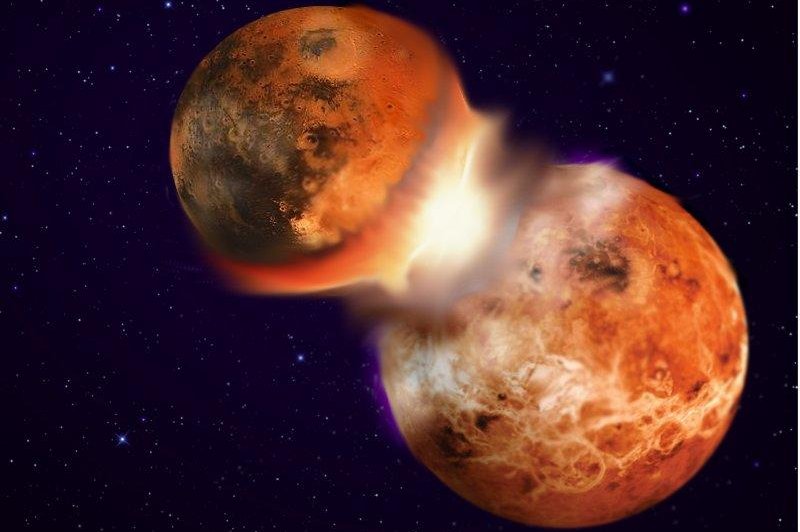A rendering shows the collision of two young planets. Image by Hagai Perets/Nature
COLLEGE PARK, Md., April 8 (UPI) -- It's long been believed that Earth's moon was formed by a significant planetary collision with a Mars-like protoplanet called Theia. Now, a new study suggests the primordial protoplanet that crashed into a young Earth was quite similar in size and composition.
"The Earth and the moon are not twins born from the same planet, but they are sisters in the sense that they grew up in the same environment," said Hagai Perets, study co-author and astrophysicist at the Israel Institute of Technology in Haifa.
Researchers already knew the composition of the moon and Earth to be remarkably similar. Therein lay the problem. The chance of Earth having a primordial twin was considered slim to none. New analysis, detailed in the journal Nature, begs to differ, however.
"For some 30 years, this contradiction was a major challenge to physicists grappling with the formation of the moon," astronomer Alessandra Matrobuono-Batisti, lead author of the new study, told Discovery News. "The hope was that better simulations might resolve this issue, but it turned out that the progress with simulations gave essentially the same results, giving rise to the 'isotope crisis,' as this problem came to be called."
Matrobuono-Batisti, Perets and their colleagues used a newly developed computer model to analyze planetary collision possibilities. The model was able to simulate an early solar system crowded with would-be planets -- 85 to 90 planetary embryos and 1,000 to 2,000 planetesimals.
When they let the simulation run its course, scientists realized sibling formation and collisions were likely more common than previously thought.
"On average, impactors are more similar to the planets they impact compared with different planets in the same system," Matrobuono-Batisti said.
A similar paper, also published in Nature, showed that the sibling planets wouldn't have had to be exactly the same in their original composition. Researchers at the University of Maryland were able to construct a model that explains how two differently composed planets could combine to form material boasting the same tungsten isotopic composition.
"This result brings us one step closer to understanding the close familial relationship between Earth and the moon," Maryland geologist Richard Walker said. "We still need to work out the details, but it's clear that our early solar system was a very violent place."















